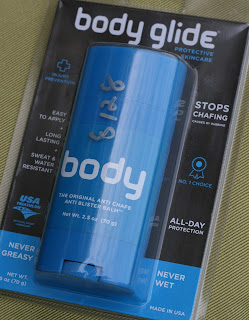I tell all my bike fit customers dealing with saddle issues that we can boil (no pun intended) saddle discomfort issues down to 3 specific issues:
1) Friction
2) Bone Pain and Bruising
3) Numbness
2) Bone Pain and Bruising
3) Numbness
This article deals with the first, Friction, probably the easiest to deal with.
Let's get real, serious cycling involves spending a lot of time putting a lot of load and heat on very little patches of skin. It goes without saying that a proper bike fit and comfortable saddle are crucial to preventing these problems, but I am amazed at how reluctant people sometimes are to use cycling-specific creams and lubricants. These are effective, and can make the difference between a great ride and a plunge into hell. A plunge into hell being something like being in a stage race and having to deal with blistering in the perineal area. NOT fun. Anybody who's had bad chaffing, a boil or a blister in the tender parts knows what I am talking about. Fortunately, these traumas can often easily be prevented with the use of appropriate products.
At the Bike Energy Lab, we sell 3 different body lubes:
Assos Chamois Crème
- from the Swiss maker of very comfortable and popular cycling shorts
- probably the best known anti friction product available
- thick cream that is essentially a thick magic potion of exotic ingredients like glycine soja oil, daucus carota sativa root, beta-carotene, beeswax, etc.
- is slightly mentholated (Euro-style), giving a cool-heat sensation, but not ideal for women
- can be applied to skin or for extra protection, in addition, directly to the chamois, but put too much on and you'll feel like you are wearing a soggy diaper
- sells for HK$180 for a tub of 140ml
Brave Soldier Friction Zone
- very similar to Assos but a bit more oily
- magic potion with ingredients like soybean oil, beeswax, various seed oils and tee tree oil, aloe vera, and cocoa seed butter
- slight menthol fragrance as well, so not great for women
- costs HK$140 for a 74ml tube
Body Glide
- originally designed for runners to prevent chaffing and blistering
- sold as a hard stick like deodorant
- harder to apply to some areas of the body (like creases and folds)
- unlike the two potions above, does not feel remotely greasy, but can feel a bit slippery, like putting on a coat of plastic
- fragrance free and does not have any methol, so definitely better for women than the other two options above
- costs $128 for a 70g stick
My fellow bike fitter and friend Jon Blyer at Acme Bicycle Co. in Brooklyn, N.Y., also has a great recipe for homemade chamois creme.
DIY Chamois Creme
Recipe:
8 oz Vaseline - for lubrication1/2 oz Neosporin - for antibacterial protection
¼-½ tsp tea tree oil - because it smells since and has some antiseptic properties.
Directions: Warm the Vaseline in a bath of warm water. Once it gets soft, stir in the other ingredients. A large “tub” of his homemade cream costs around HK$40 to make. Disclaimer: I can’t be responsible if any homemade cream like this one stains the chamois in your expensive shorts, but that said, any good quality short should be able to handle any of the above creams. This one can be applied to body and shorts. It is long lasting, though perhaps not a long lasting as the 3 commercial options above.
All of the above products are extremely effective at preventing blisters and chaffing. I think any serious cyclist should use an anti-friction product on any outdoor ride longer than one hour. On tri and TT bikes, and for any indoor riding, because the position in this case is more static and the potential for friction issues greater, I recommend using an anti-friction product on each and every ride.
I always say that unlike numbness, which should normally not be tolerated and is your body's way of telling you that you need a different saddle, it's sometimes worth pushing through with a saddle you don't think you might tolerate at first because of friction, as long as an appropriate anti-friction product is used. A saddle that you may not think is the perfect saddle for you just may be once you do.
So with a customer who was minor complaints with a new saddle, perhaps slight hot spots, or light blistering, and that person has not used any creams prior, I will recommend that it MAY BE worth pushing through for a few weeks with the use of creams.
It is certainly true that some areas of the skin, in between the legs and in the perineal area, sometimes just don't adapt, and the skin just won't get thick enough, and if things are trending worse after 2-3 weeks, I'll recommend moving on to a different saddle.







